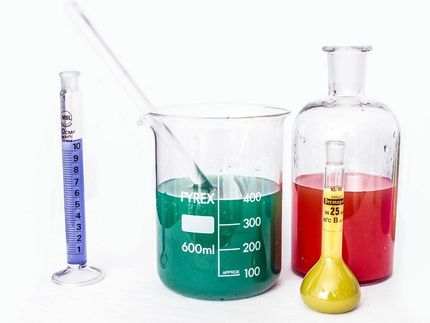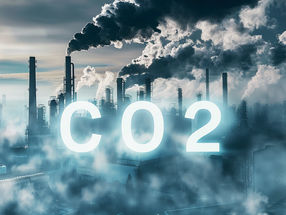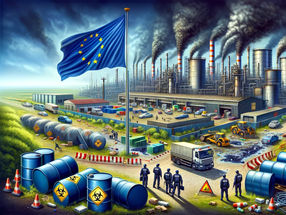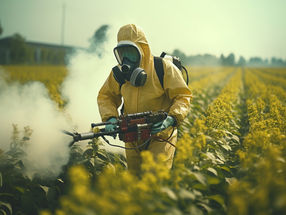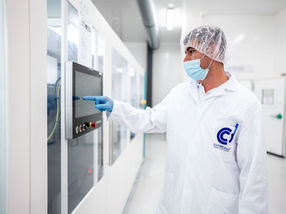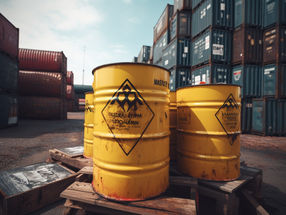ECHA updates the REACH Candidate List with seven new substances
Seven new substances have been added to the Candidate List of Substances of Very High Concern (SVHC) for authorisation. Companies manufacturing or importing these substances, or articles containing the substances, need to check their potential obligations that result from the listing.
Following unanimous agreement of the Member State Committee, ECHA has added seven substances to the Candidate List, which are carcinogenic and/or toxic for reproduction. The list now contains 53 substances in total.
In addition, the entry on the Candidate List for cobalt dichloride has been updated due to its classification as toxic for reproduction. Cobalt dichloride was originally identified as an SVHC in October 2008 because of its classification as carcinogenic.
As foreseen by REACH, ECHA will regularly recommend to the European Commission that substances prioritised from the Candidate List are included in the Authorisation List (Annex XIV of the REACH Regulation).
Beyond possible other obligations, producers and importers of articles shall notify ECHA within six months after a substance has been included in the Candidate List, if the substance is present in those articles in quantities totalling over one tonne per producer or importer per year and if the substance is present in those articles above a concentration of 0.1 % weight by weight.
| Substance name | EC number | CAS number | Proposed SVHC properties | Potential uses * |
| 2-ethoxyethyl acetate | 203-839-2 | 111-15-9 | Art. 57 (c), toxic for reproduction | No registration for 2-ethoxyethylacetate has been submitted to ECHA. Hence the substance seems not to be manufactured in or imported to the EU in quantities above 1 t/y. Main uses in the past were as solvent in coatings and in the chemical industry, but also as intermediate in the manufacture of cyanoacrylate adhesives. |
| Strontium chromate | 232-142-6 | 7789-06-2 | Art. 57 (a), carcinogenic | Strontium chromate is mainly used as corrosion inhibitor in coating mixtures used in the aeronautic/aerospace sector, in the coil coating sector of steel and aluminium and in the vehicle coating sector. |
| 1,2-Benzenedicarboxylic acid, di-C7-11-branched and linear alkyl esters (DHNUP) | 271-084-6 | 68515-42-4 | Art. 57 (c), toxic for reproduction | No registration for DHNUP has been submitted to ECHA. Hence the substance seems not to be manufactured in or imported to the EU in quantities above 1 t/y. Main uses in the past were as plasticiser in PVC, foam, adhesives and coatings. |
| Hydrazine | 206-114-9 | 302-01-2 7803-57-8 |
Art. 57 (a), carcinogenic |
Hydrazine is mainly used as intermediate in the manufacture of hydrazine derivatives, as a monomer in polymerisations, as a corrosion inhibitor in water treatment and for metal reduction and refining of chemicals. It is also used as a propellant for aerospace vehicles and as fuel in military (emergency) power units. |
| 1-methyl-2-pyrrolidone | 212-828-1 | 872-50-4 | Art. 57 (c), toxic for reproduction | 1-methyl-2-pyrrolidone is mainly used as solvent in coatings, cleaning products, for electronic equipment manufacture, as well as in semiconductor industry, petrochemical processing, pharmaceuticals and agrochemicals. |
| 1,2,3-trichloropropane | 202-486-1 | 96-18-4 | Art. 57 (a) & (c), carcinogenic & toxic for reproduction |
1,2,3-trichloropropane is mainly used as intermediate in the manufacture of chlorinated solvents and agricultural products. It is also used as monomer. In the past 1,2,3-trichloropropane was used as solvent, paint and varnish remover and as degreasing agent. |
| 1,2-Benzenedicarboxylic acid, di-C6-8-branched alkyl esters, C7-rich (DIHP) | 276-158-1 | 71888-89-6 | Art. 57 (c), toxic for reproduction | No registration for DIHP has been submitted to ECHA. Hence the substance seems not to be manufactured in or imported to the EU in quantities above 1 t/y. Main uses in the past were as plasticiser in PVC and in sealants, coatings and potentially printing inks. |
| Cobalt dichloride | 231-589-4 | 7646-79-9 | Art. 57 (c), toxic for reproduction | Cobalt dichloride is mainly used as intermediate in the manufacture of other cobalt compounds, in tyre adhesion additives, organic textile dyes, and drying agents for paints. Furthermore it is used in surface treatment processes, as water treatment / corrosion inhibition chemical, as colourant or for discolouring in the production of inorganic pigments & frits, glass, and ceramic ware, in varistors and magnets, as well as in humidity indicators. |
* The information on the potential uses of these substances is based on information provided in the Annex XV dossiers prepared by ECHA and the submitting Member States, available registration data and on comments received during public consultation on the substances and may not necessarily provide a complete overview of all uses.
Most read news
Other news from the department politics & laws

Get the chemical industry in your inbox
By submitting this form you agree that LUMITOS AG will send you the newsletter(s) selected above by email. Your data will not be passed on to third parties. Your data will be stored and processed in accordance with our data protection regulations. LUMITOS may contact you by email for the purpose of advertising or market and opinion surveys. You can revoke your consent at any time without giving reasons to LUMITOS AG, Ernst-Augustin-Str. 2, 12489 Berlin, Germany or by e-mail at revoke@lumitos.com with effect for the future. In addition, each email contains a link to unsubscribe from the corresponding newsletter.
